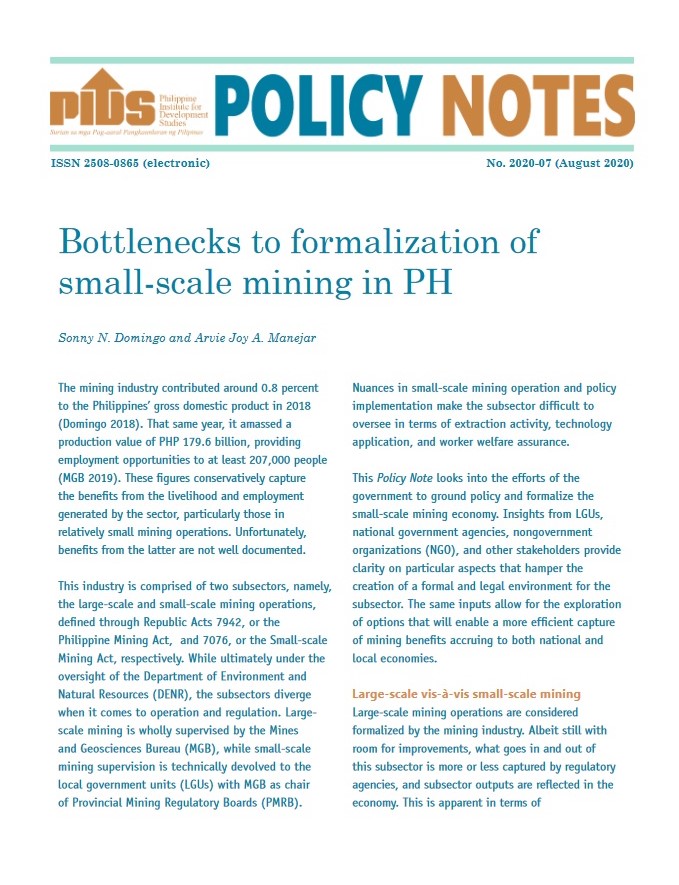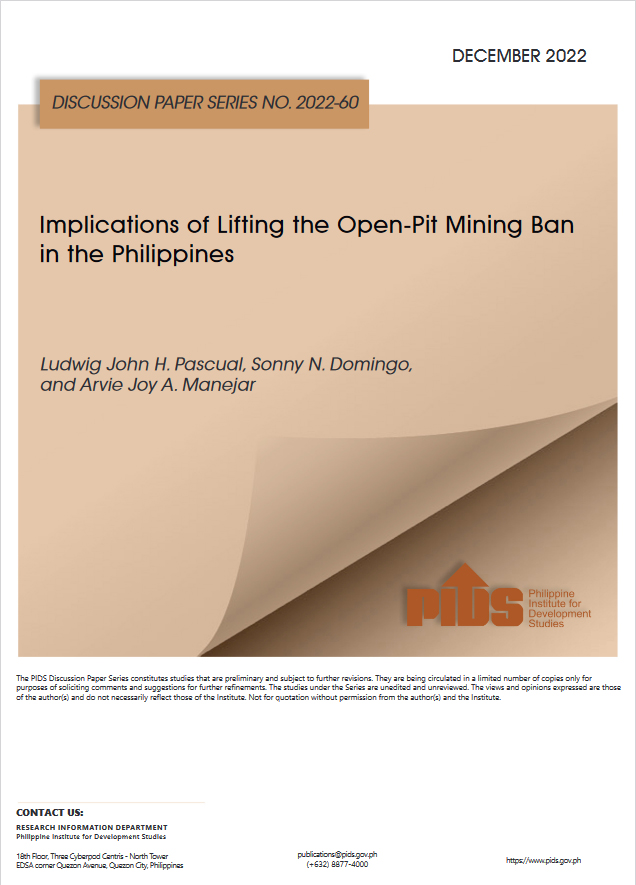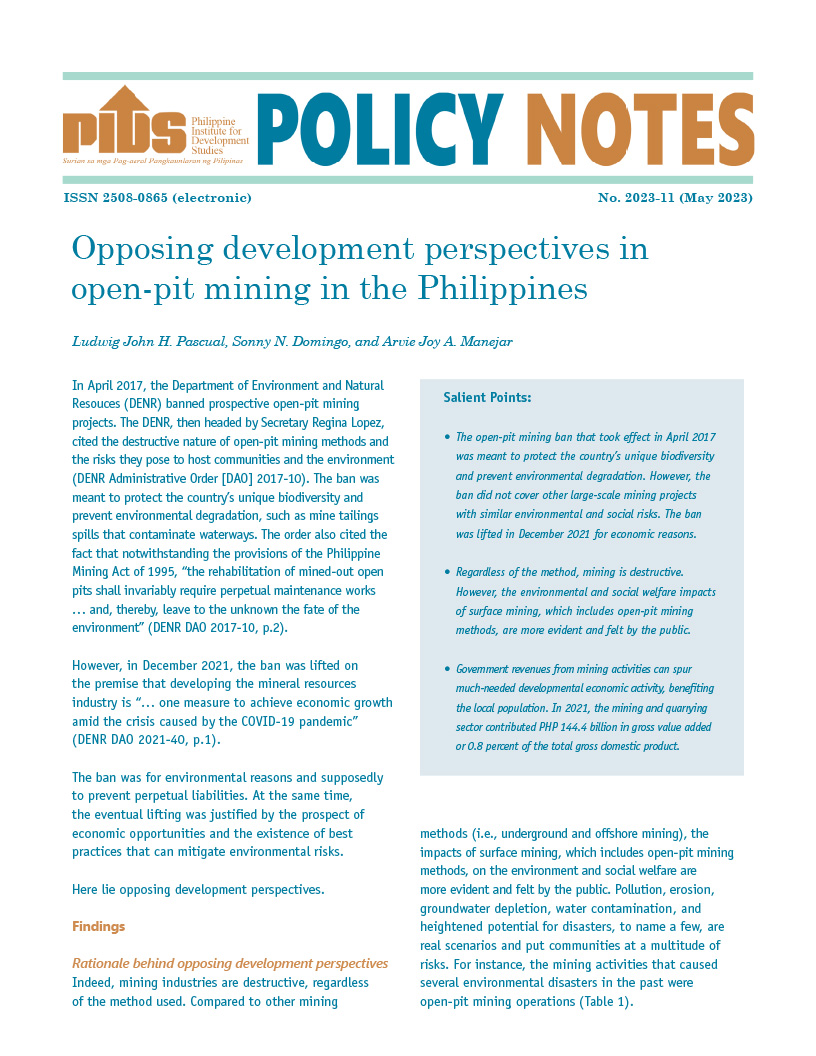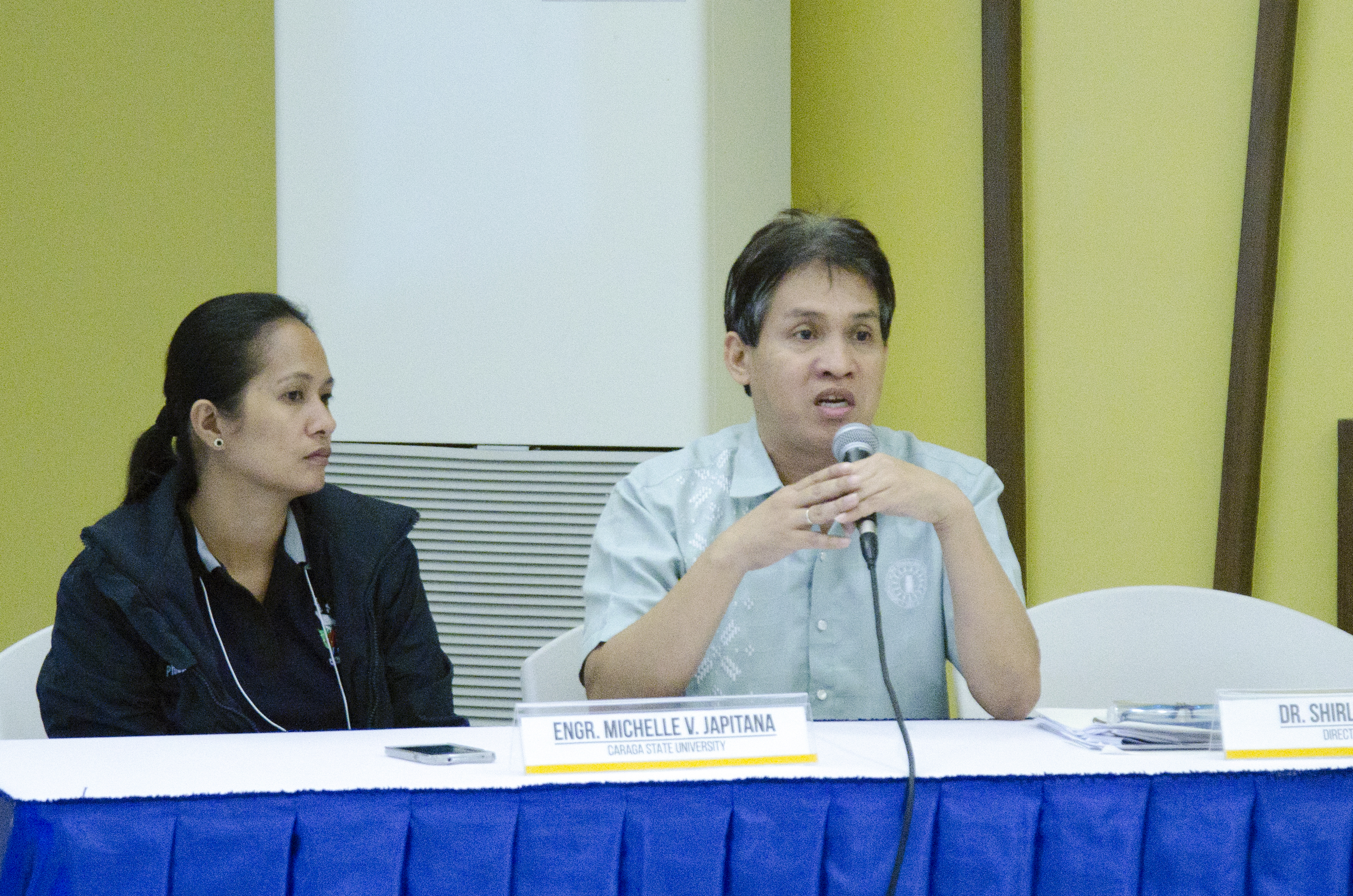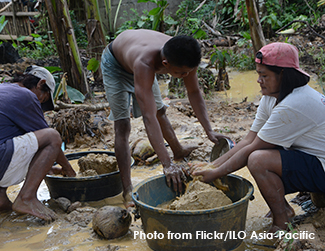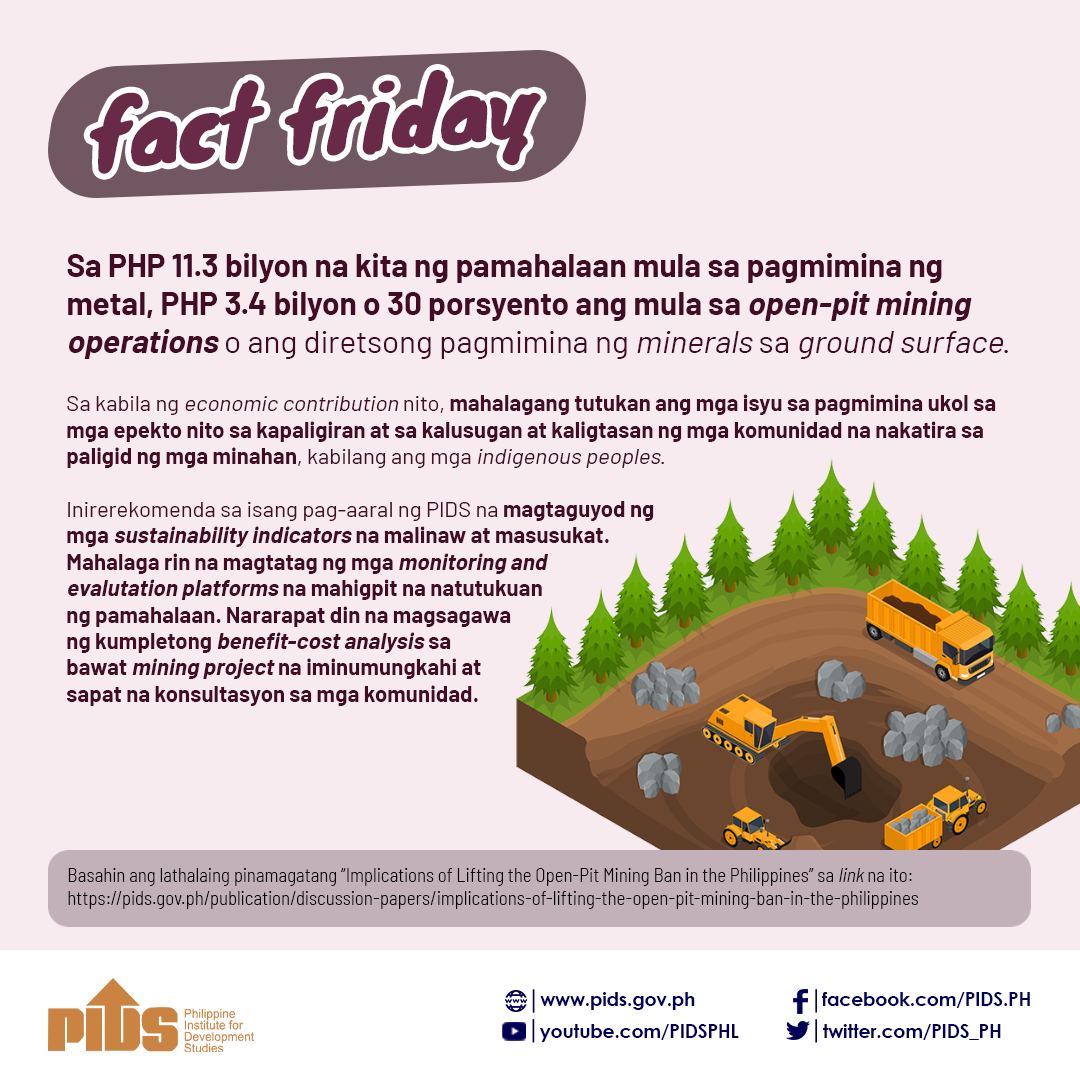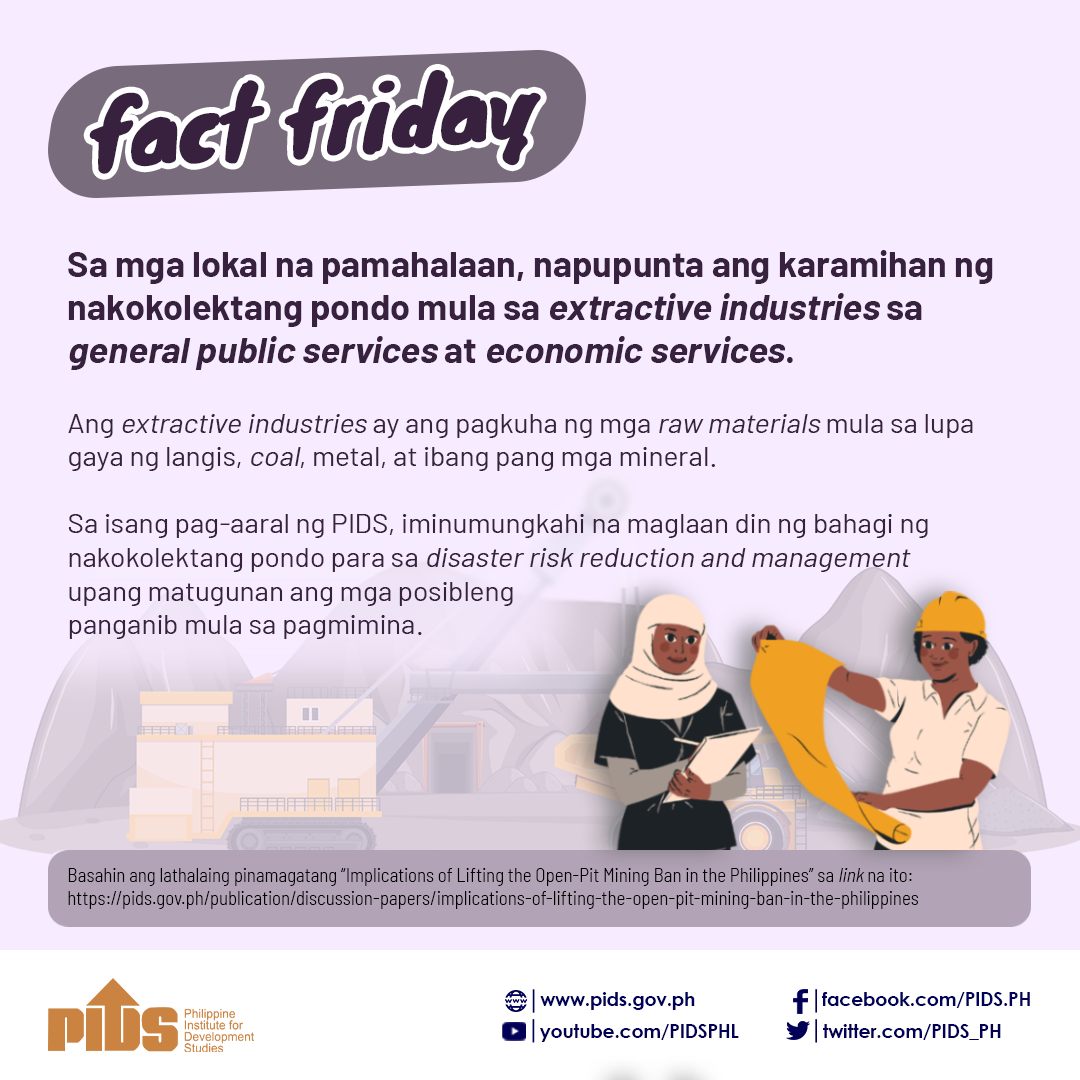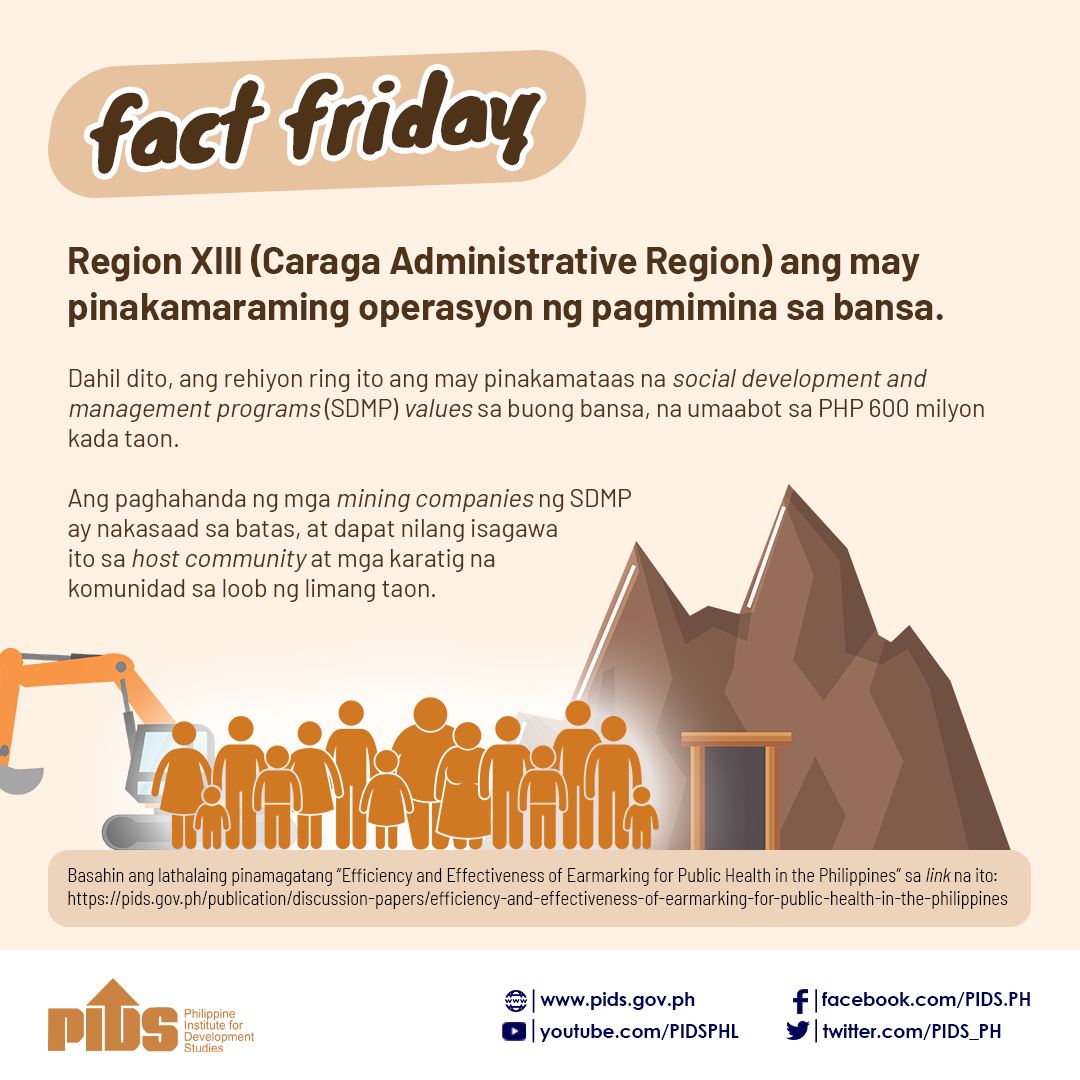
Various issues hound the country’s mining industry, a study published by Philippine Institute for Development Studies (PIDS) revealed.
In her policy note titled “Challenges in the Philippine mining industry”, PIDS Consultant Eligia Clemente highlighted problems in the implementation of mining laws, particularly in the issuance of permits and ordinances of local government units (LGUs), as well as in the declaration of indigenous people (IP) claims. She also found institutional issues within the National Commission on Indigenous Peoples (NCIP).
The presence of various agencies assigned to handle mining concerns has resulted in overlapping functions, according to the study. These include the Department of Environment and Natural Resources as the lead agency, and line bureaus such as the Mines and Geosciences Bureau (MGB) that handles administration and control of mining operations, the Environmental Management Bureau (EMB) that monitors and controls environmental conditions, and the Forestry Management Bureau that oversees management of forests under mining concessions.
“This creates a venue for cracks, which are filled in by enterprising government employees through illegal means,” the author noted, adding that companies wanting to secure permits have found a way to circumvent some requirements to avoid paying additional fees.
Moreover, contractors reported facing difficulties when requesting for permits and other documents from local governments due to the contradicting policies of the national government and LGUs in approving a mineral production sharing agreement (MPSA). While the Philippine Mining Act (PMA) allows for an MPSA between a mining contractor and the government through MGB, the Local Government Code of 1991 gives LGUs the authority to approve operating permits in local areas to ensure the protection of their environment.
Lands under the domain of IP, too, are not exempted from the procedures of securing free, prior, and informed consent (FPIC) documents. IP communities have a say on the issuance of operating permits in their areas either through their council of elders or tribal leaders. In return, “any IP in the area benefits through the royalty payments of [a mining] company.” The study, however, found that some “tend to abuse the power and responsibility granted to them”.
“In some cases, there were talks that the decision is done even before the stakeholders’ meeting takes place and that the meeting is just for formality,” Clemente disclosed. The author also noted that there is no formal audit on how a tribal leader uses the royalties paid by a mining company.
Gaps were also seen within the NCIP, thereby affecting its performance. These include inadequate logistics support from the government, as well as the lack of qualified personnel and supervisors to efficiently perform NCIP’s mandates and functions, especially in regional offices.
To address differing regional interpretations of rules and regulations related to mining, the author urged the government to establish a common implementing guideline for all offices that might help eliminate personal tendencies to relax rules.
Clemente also recommended that NCIP be provided with sufficient staff so that it could carry out its tasks timely and efficiently. He said that the delay in policy approvals has hampered the release of benefits for IPs. To resolve the backlog in personnel, the author said that “issuances from NCIP can be harmonized, such that a single protocol for permitting can be followed and duplication of requirements can be minimized.”
On the issue of auditing of payments given to tribal leaders of IP communities, Clemente suggested that “proper preparation and guidance should be given to them prior to the release of funds such that even without a formal audit, disbursements can be tracked” and funds can be properly accounted. He also suggested the conduct of a planning exercise as a guidance seminar for the tribal leaders. ###
In her policy note titled “Challenges in the Philippine mining industry”, PIDS Consultant Eligia Clemente highlighted problems in the implementation of mining laws, particularly in the issuance of permits and ordinances of local government units (LGUs), as well as in the declaration of indigenous people (IP) claims. She also found institutional issues within the National Commission on Indigenous Peoples (NCIP).
The presence of various agencies assigned to handle mining concerns has resulted in overlapping functions, according to the study. These include the Department of Environment and Natural Resources as the lead agency, and line bureaus such as the Mines and Geosciences Bureau (MGB) that handles administration and control of mining operations, the Environmental Management Bureau (EMB) that monitors and controls environmental conditions, and the Forestry Management Bureau that oversees management of forests under mining concessions.
“This creates a venue for cracks, which are filled in by enterprising government employees through illegal means,” the author noted, adding that companies wanting to secure permits have found a way to circumvent some requirements to avoid paying additional fees.
Moreover, contractors reported facing difficulties when requesting for permits and other documents from local governments due to the contradicting policies of the national government and LGUs in approving a mineral production sharing agreement (MPSA). While the Philippine Mining Act (PMA) allows for an MPSA between a mining contractor and the government through MGB, the Local Government Code of 1991 gives LGUs the authority to approve operating permits in local areas to ensure the protection of their environment.
Lands under the domain of IP, too, are not exempted from the procedures of securing free, prior, and informed consent (FPIC) documents. IP communities have a say on the issuance of operating permits in their areas either through their council of elders or tribal leaders. In return, “any IP in the area benefits through the royalty payments of [a mining] company.” The study, however, found that some “tend to abuse the power and responsibility granted to them”.
“In some cases, there were talks that the decision is done even before the stakeholders’ meeting takes place and that the meeting is just for formality,” Clemente disclosed. The author also noted that there is no formal audit on how a tribal leader uses the royalties paid by a mining company.
Gaps were also seen within the NCIP, thereby affecting its performance. These include inadequate logistics support from the government, as well as the lack of qualified personnel and supervisors to efficiently perform NCIP’s mandates and functions, especially in regional offices.
To address differing regional interpretations of rules and regulations related to mining, the author urged the government to establish a common implementing guideline for all offices that might help eliminate personal tendencies to relax rules.
Clemente also recommended that NCIP be provided with sufficient staff so that it could carry out its tasks timely and efficiently. He said that the delay in policy approvals has hampered the release of benefits for IPs. To resolve the backlog in personnel, the author said that “issuances from NCIP can be harmonized, such that a single protocol for permitting can be followed and duplication of requirements can be minimized.”
On the issue of auditing of payments given to tribal leaders of IP communities, Clemente suggested that “proper preparation and guidance should be given to them prior to the release of funds such that even without a formal audit, disbursements can be tracked” and funds can be properly accounted. He also suggested the conduct of a planning exercise as a guidance seminar for the tribal leaders. ###

